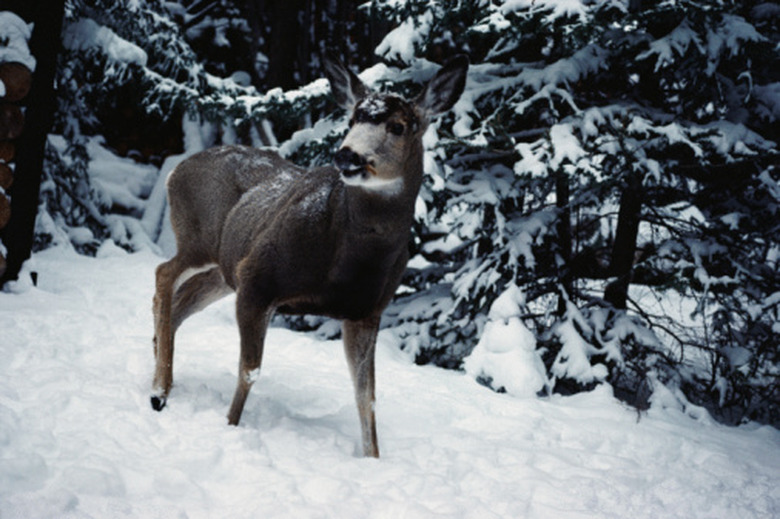About Locust Trees Bean Pods
Many varieties of locust grow in the U.S., with honey locust and black locust being most common. Honey locust has pods that contain edible seeds, while the pods of other locust tree varieties are primarily for reproductive use.
Honey Locust Pods
Honey locust (Gleditsia triacanthos) grows up to 80 feet tall. Its pods are flat and shaped like a strap. Lime color in the summer and and reddish-brown in the fall, the pods are 12 to 18 inches long and contain 12 to 14 seeds. The pods are eaten by many animals, including deer, cattle, squirrels, rabbits and birds.
Black Locust Pods
Black locust (Robinia pseudoacacia) is a medium-size tree that grows up to 80 feet tall. Its pods are dark brown and approximately 4 inches long. They stay attached to the tree during winter. Each pod has up to 14 seeds, which are poisonous to humans.
- Many varieties of locust grow in the U.S., with honey locust and black locust being most common.
- Black locust (Robinia pseudoacacia) is a medium-size tree that grows up to 80 feet tall.
Other Locust Pods
New Mexican locust (Robinia neomexicana) is a small tree that reaches approximately 25 feet tall. It has flat, brown pods 2 to 4 inches long that are covered in gland-tipped hairs. Bristly locust (Robinia hispida) grows to a height of approximately 8 feet and has flat, bristly pods that are 2 to 2-1/2 inches long.
Identify Locust Trees
Locust trees are hardy and fast-growing members of the pea family that grow well in various environments. Growing from 40 to 80 feet tall, the trunk and larger branches bear stout, branched thorns up to 20 inches long which can cause serious injury. The flowers are greenish-yellow rather than white or pink and are fairly insignificant compared to the showy flowers of other locusts. Individual leaflets on the pinnately compound leaves are about 1 inch long, and the compound leaves are 7 to 8 inches long. Leathery seed pods are about 2 to 4 inches long and dark red to black. The branches and trunk have stouter spines on them, which are sometimes branched, but they're not as large as honey locust spines. This locust plant can be invasive. Distinguish New Mexico locust (Robinia neomexicana, hardy in USDA zones 4 through 8) by its small size, usually around 6 1/2 to 15 feet tall, although they can reach 25 feet high. Pods are 2 to 4 inches long and have a narrow wing. Native to the southeastern United States, it is invasive in some areas.
- New Mexican locust (Robinia neomexicana) is a small tree that reaches approximately 25 feet tall.
- This locust plant can be invasive.
- Distinguish New Mexico locust (Robinia neomexicana, hardy in USDA zones 4 through 8) by its small size, usually around 6 1/2 to 15 feet tall, although they can reach 25 feet high.
References
- Fairfax County Public Schools: Black Locust
- Utah State Univeristy Cooperative Extension: How to Plant and Take Care of Your Honeylocust Tree; Dr. Mike Kuhns
- Ohio Department of Natural Resources: Ohio Trees-Honeylocust
- United States Department of Agriculture: Plant Guide-Honey Locust
- Floridata: Gleditsia Triacanthos
- University of Florida IFAS Extension: Robinia Pseudoacacia Black Locust
- Missouri Department of Conservation: Black Locust Control
- Fine Gardening: Bristly Locust Robinia Hispida
